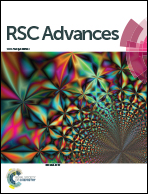Analysis of model Pd- and Pt-containing contaminants in aqueous media using ESI-MS and the fragment partitioning approach†
Abstract
Ubiquitous usage of Pd- and Pt-containing nanoparticles in automotive catalytic converters is an important potential threat to the environment. The unavoidable release of transition metal species to the environment and their contact with water give rise to the poisoning of ecosystems by heavy metal compounds. Electrospray ionization mass spectrometry and the newly-developed fragment partitioning approach show that a variety of metal species may be formed upon contact of metal salts with water. A series of monometallic complexes, homonuclear clusters and heteronuclear clusters of palladium and platinum were detected and characterized. The study has revealed a critical danger of metal contamination due to easy formation of transition metal clusters, which may be much more toxic than corresponding monometallic complexes.


 Please wait while we load your content...
Please wait while we load your content...